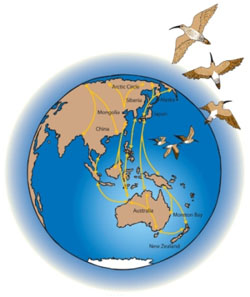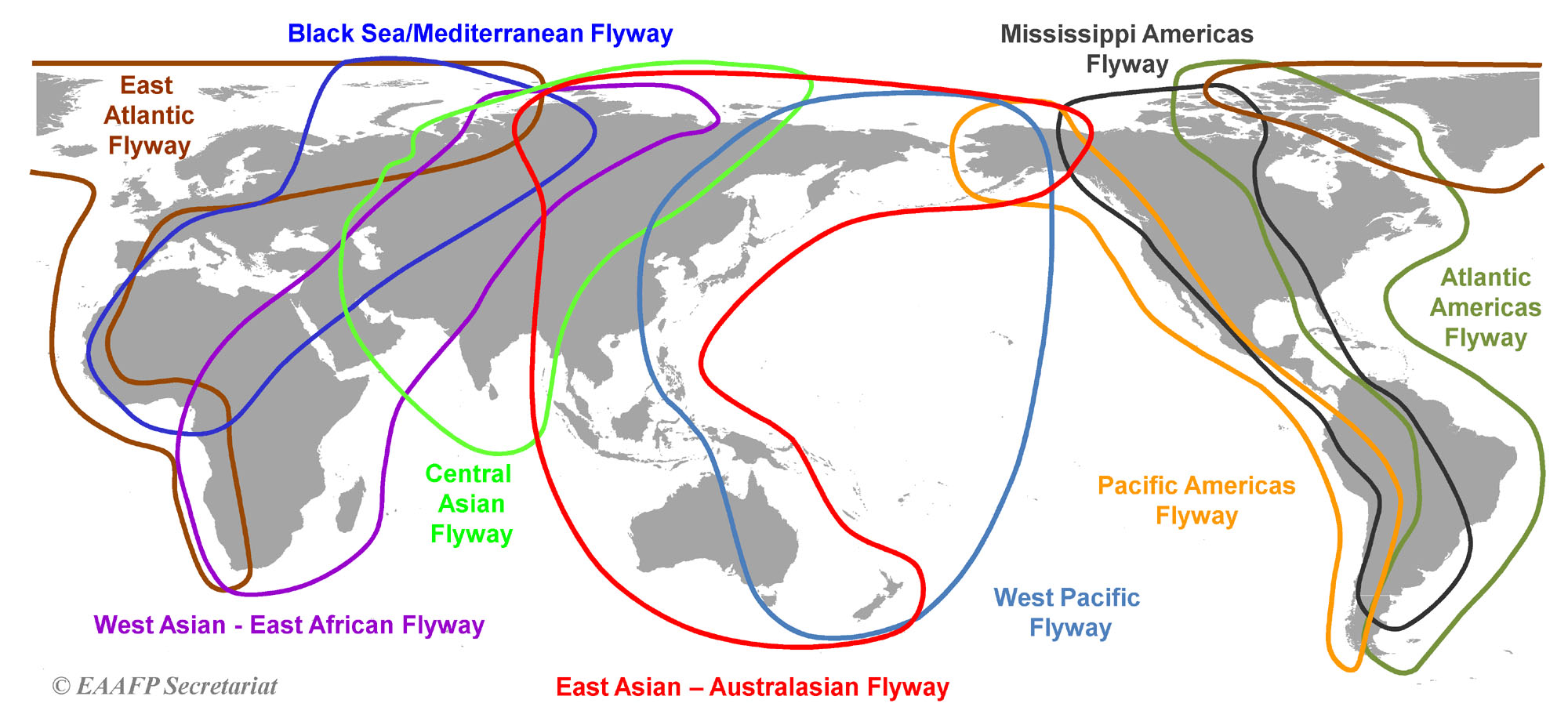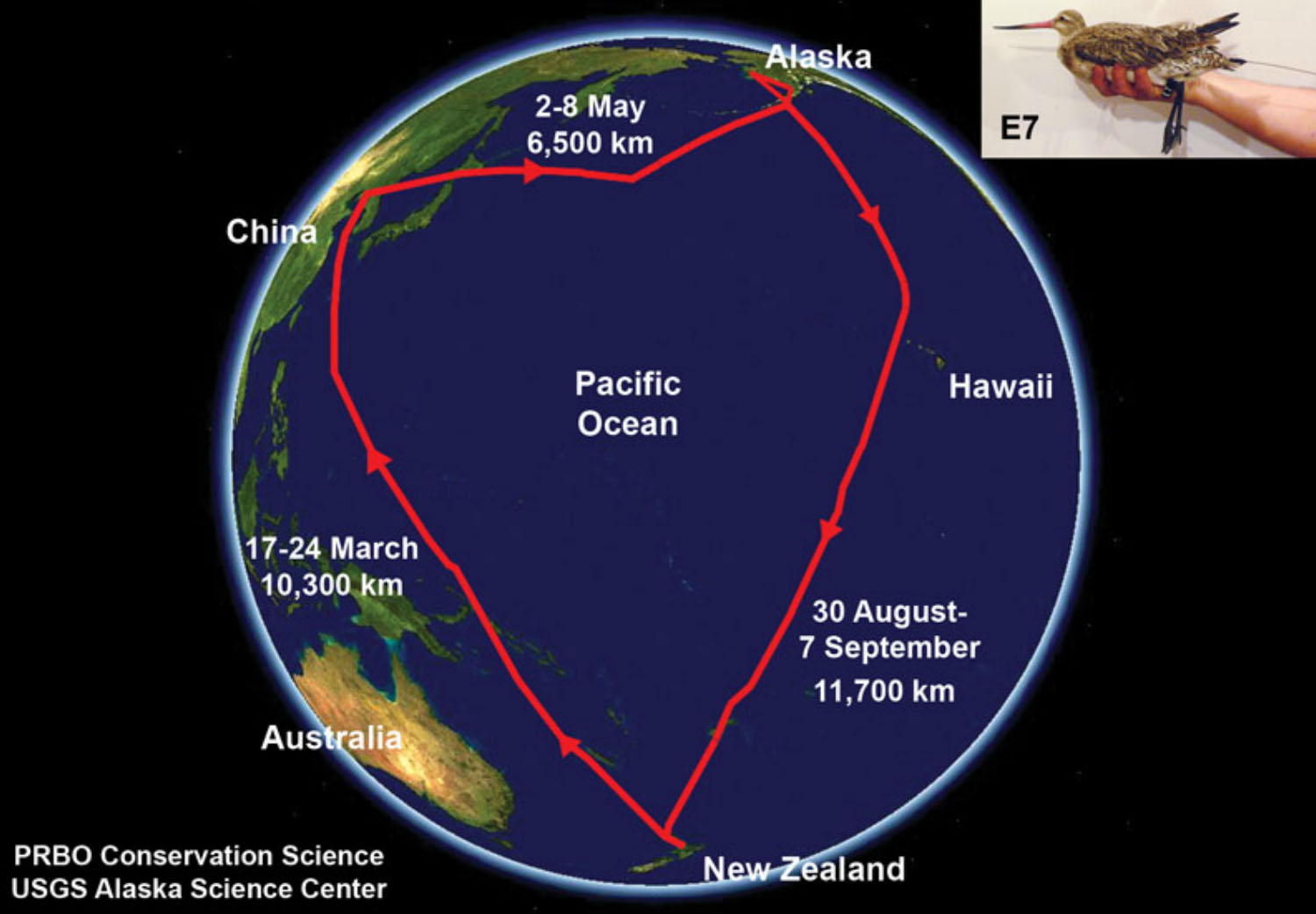|
|
East Asian—Australasian FlywayAcross the world there are several identifiable 'flyways' for species that have similar breeding or non-breeding ranges and migration patterns. Australia is one of 22 countries within the East Asian—Australasian Flyway and migratory waterbirds reach it via one or more of these countries, e.g. from breeding grounds in Russia or New Zealand. Shorebird migration is among the most extraordinary feats of travel in the animal kingdom. Each species has its own breeding and non-breeding distribution and habitat preferences. Each has its own migration strategies, flight routes and stopover sites. Australia is the southern destination for shorebirds using the East Asian—Australasian Flyway and a significant proportion of birds arriving here either stay in Queensland, transit through Queensland to New South Wales, Victoria or Tasmania, or travel through to New Zealand. Migration along the East Asian—Australasian FlywayMigratory shorebirds of the East Asian—Australasian Flyway breed in parts of northeast Asia (eastern Siberia and China), to as far west as the Taymyr Peninsula in the far north of Russia and as far east as Alaska (e.g. some bar-tailed godwits). Most of these birds migrate southward before the onset of winter, with the destination for many being the warmer feeding habitats of Australia. After spending the summer in the south, the first leg of the northward migration from Australia for waterbirds can be a very long flight of more than 6,000 km to reach a staging site in the flyway, such as the mudflats around the Yellow Sea in China and Korea. The Yellow Sea region of the flyway is especially important as birds need to spend time here feeding to regain weight lost in consuming body fat that powered the first leg of their journey north from Australia, and to prepare for arrival at their breeding grounds. Birds of most species travel 20,000 km to the northern hemisphere and back to Australia each year. The epic journeys of bar-tailed godwits across the Pacific Ocean to the east coast of Australia and New Zealand from Alaska include nonstop flights of up to 13,000 km. Shorebirds that occur in large numbers in Australia originate from the following areas:
The East Asian–Australasian Flyway includes a complex of many islands and ocean crossings, spans many countries and contains nearly half the world’s humans. Areas of the Flyway are subject to large-scale, rapid economic development and consequently many waterbird populations in this flyway are threatened or in decline. More information is available on the cooperative management of shorebirds and their habitat under the East Asian–Australasian Flyway Partnership (EAAFP). Additional information
Last updated: 16 October 2023 This page should be cited as: Department of Environment, Science and Innovation, Queensland (2023) East Asian—Australasian Flyway, WetlandInfo website, accessed 8 May 2025. Available at: https://wetlandinfo.des.qld.gov.au/wetlands/ecology/components/biota/fauna/fauna-taxon/birds/eaa-flyway.html |

 — Department of the Environment, Tourism, Science and Innovation
— Department of the Environment, Tourism, Science and Innovation




